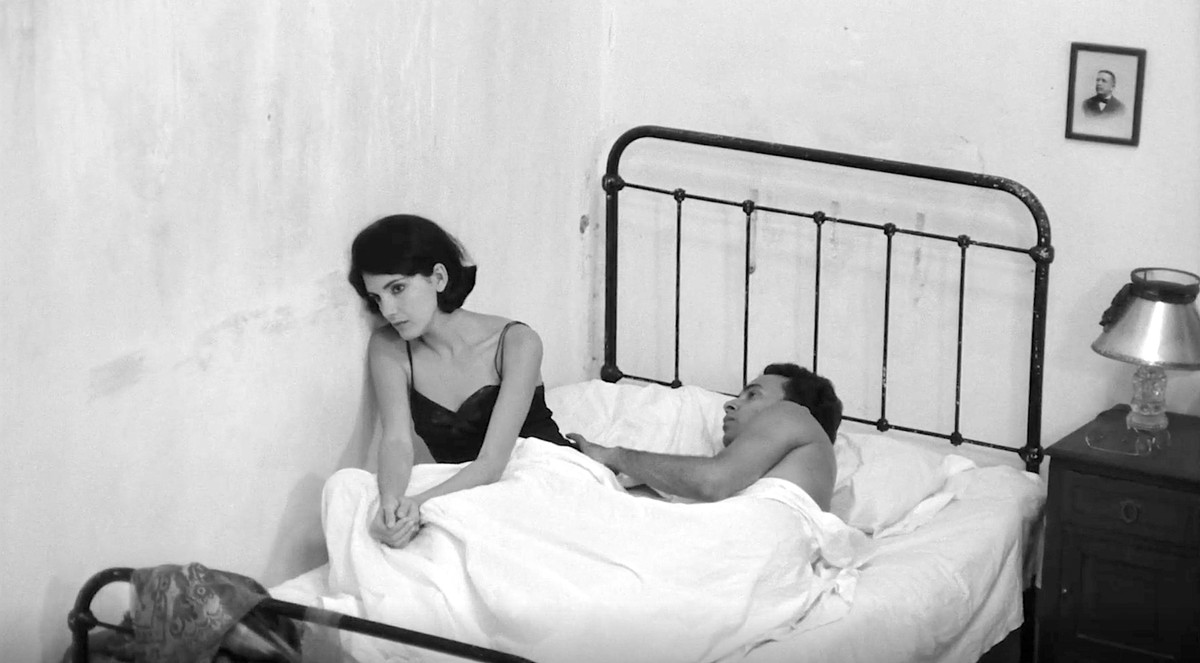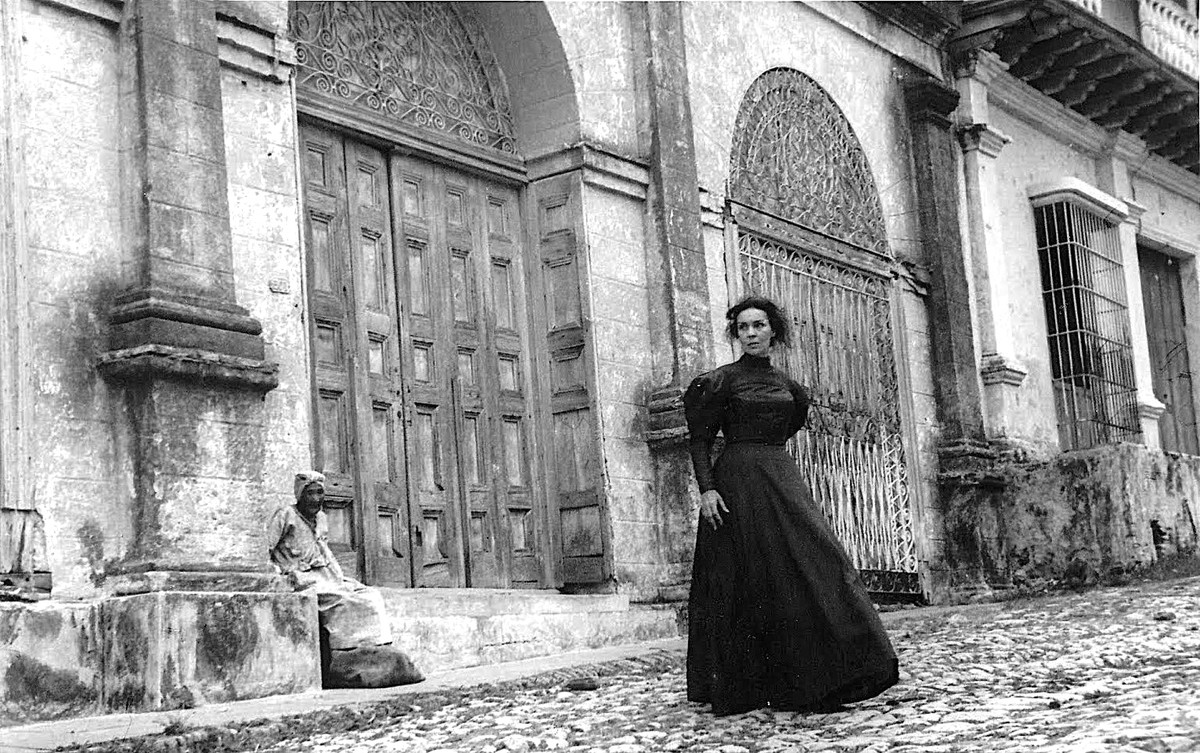Lucia

Ein Vorname für drei Frauen. Jede steht mit ihrer Geschichte für einen Schlüsselmoment in der Geschichte Kubas: 1895, 1932, 196. . Humberto Solás hat ausgesprochen stilbewusst ein fliessendes Triptychon gestaltet, in dem er die Entwicklung der Gesellschaft an den drei Lucías spiegelt. Es war sein erster Spielfilm und ein meisterliches Stück.
Geschichte I
Die erste Handlung spielt um 1895 zur Zeit des Kampfs gegen die spanischen Kolonialherren. Lucía gehört der wohlbehüteten kleinen Schicht der Besitzenden an und verliebt sich in Rafael, der halb Kubaner halb Spanier ist. Die Frauen sind in edle weisse Roben gekleidet, erzählen sich die verrücktesten Geschichten, während draussen auf der Insel der Krieg tobt, der von Schwarz dominiert wird. Die Liebe Lucías wird enttäuscht durch die Kunde, dass Rafael auch in Spanien eine Frau hat und eine Tocher. Mitten im Kriegsgetümmel lässt er Lucía im Stich, sie hat nur noch eines im Sinn: Den Mann ihrer Träume umzubringen. Die Frau rächt sich am Mann.
Geschichte II
Die Lucía der zweiten Epoche stammt aus dem, was man gutbürgerliches Haus nennen würde. Sie verliebt sich 1932 in den Freiheitskämpfer Aldo, der gegen den Diktator Machado kämpft, verlässt für ihn den Schutz des Elternhauses und unterstützt ihn im Kampf. Der Machthaber wird zwar gestürzt, aber Korruption und Misswirtschaft bleiben weiterhin bestehen, so dass Aldos Kampf weitergeht bis zum unausweichlich tödlichen Ende. Die Frau bleibt allein und hochschwanger zurück mit dem Traum ihres Geliebten und der öden Gegenwart, die weiter nach Veränderung ruft.
Geschichte III
Die dritte Lucía lebt in den 1960er Jahren. Die Revolution hat gesiegt, die Gesellschaft könnte sich verändern, und viel wird daran gesetzt, dass sie das auch tut. Was freilich bleibt, ist das Individuum. Die jüngste Lucía ist glücklich mit Tomas verheiratet, doch der strotzt vor Eifersucht, glaubt, dass seine Frau sein Eigentum sei und schliesst sie zuhause ein. Nicht einmal dem jungen Lehrer, der gekommen ist, um den Analphabetismus zu beseitigen und Lucía Lesen und Schreiben beibringt, traut Tomas über den Weg. Sie ergreift die Flucht mit solidarischer Hilfe aus dem Dorf.
Festivals & Auszeichnungen







Credits
Möchten Sie diesen Film zeigen?
Bitte füllen Sie unser Formular aus.
Kontaktieren Sie uns
Pressestimmen
«One of the abilities of cinema is to portray what a country is going through... it is about putting the country’s face on the screen, but it’s also about enlarging one’s vision of that specific place.» Walter Salles
«ICAIC was born out of the victory of the Revolution. Those of us who were about to attempt to found a national film industry from scratch faced a set of problems that we had to resolve immediately. Our problem was a basic cultural dichotomy, as in Lenin’s thesis on national cultures. We had an elitist cultural tradition that represented the interests of the dominant class, and a more clandestine culture that had already received wide exposure; however, at some point, all artistic expression started to be converted into products of a consumer-oriented culture.
Because the elitist and the popular were so intimately tied, because petit bourgeois consciousness and influences from Europe and North America were so dominant, our general cultural panorama at the time of the Revolution was in fact a pretty desolate one. This was during the sixties, when the most important film movement was the French New Wave. Films like Alain Resnais’ Hiroshima mon amour (1959) or Michelangelo Antonioni’s L’Avventura (1960) marked most of the subsequent decade. These influences alienated us from our indigenous cultural forms and from a more serious search for a kind of cultural expression consistent with national life and with the explosive dynamism of the Revolution. Yet this was a path we clearly had to travel. Anyone who picks up the tools of artistic activity for the first time is going to be vulnerable to outside influences.
With Lucía, I wanted to view our history in phases, to show how apparent frustrations and setbacks –such as the decade of the ’30s–led us to a higher stage of national life. Whenever you make a historical film, whether it’s set two decades or two centuries ago, you are referring to the present.
Lucía is not a film about women, it’s a film about society. But within society, I chose the most vulnerable character, the one who is more transcendentally affected at any given moment by contradictions and change.»
Humberto Solás
NOTES ON THE RESTORATION:
Restored by Cineteca di Bologna at L’Immagine Ritrovata laboratory in association with Instituto Cubano del Arte e Industria Cinematográficos (ICAIC). Restoration funded by Turner Classic Movies and The Film Foundation’s World Cinema Project.
The restoration of Lucía was made possible through the use of the original camera and sound negative and a third generation dupe negative provided by and preserved at the ICAIC. The state of conservation of the negative was critical, due to advanced vinegar syndrome causing portions of the film stock to colliquate (melt) or stick together; the negative also appeared heavily warped and buckled, causing the image to lose focus throughout the film. Despite undergoing several weeks of drying and softening treatments, large portions of 8 (out of 18) reels could not be used. These sections were replaced with a second generation duplicate preserved by the Bundesarchiv-Filmarchiv since the film had been distributed in East Germany in the late 1960s. All the elements were wet-scanned at a 4K resolution to eliminate or reduce heavy scratches and halos. Additional documentation was used to confirm that the film had been shot on two different film stocks–Orwo and Ilford–and graded according to the time-period depicted in the film. A previously unscreened vintage print preserved at the BFI National Archive was used as a reference. The original soundtrack was in fairly good condition, with the exception of uneven and inconsistent background noise detected in the mix which required careful dynamic noise reduction.





